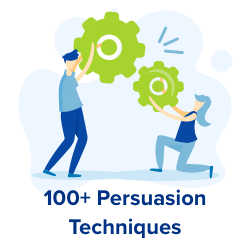Are you Making These Common Mistakes on your e-Commerce Platform?
 This article was originally published on RetailSector.co.uk
This article was originally published on RetailSector.co.uk
—
“It is thought that by 2040 some 95% of purchases will be facilitated by e-commerce.
As more people are turning to these platforms instead of the physical stores to make their purchases, it is vital for retailers to ensure that they optimise their platforms in order to boost traffic and ultimately increase sales. However, there are a number of common mistakes that retailers are making which could see them lose out on these sales.
Poor checkout pages
We have all been there, we just want to make a quick purchase but the checkout process seems to last for a lifetime, there is no skip/guest checkout for a single purchase and the process is still far from pain free.
In today’s competitive landscape this is simply no longer acceptable and customers will not tolerate it. Ensuring your checkout page is easily accessible, clear to read (with no added costs) and offers customers extra benefits at checkouts will prevent you from losing out on extra conversions that could be crucial to your business.
One simple way you can encourage customers to complete the checkout process is to advertise how many steps away they are from completing the purchase.
‘Amateur’ landing pages
Amateur landing pages could be beautiful from a design point of view, but crucially try to include too much, often irrelevant information. Having an overcrowded page can be a huge turnoff for potential customers: they don’t want ‘beautiful’ they want relevant and something that ‘helps them’.
You also need to make your Call To Action (CTA) obvious – both by making it a contrasting colour from the rest of the page and by having other content of the page point towards it. You can get creative with this: if you use images of people, make sure they are looking at or gesturing towards your CTA. Another idea is to arrange your text so it gestures to the CTA.
Distinctive copywriting techniques
The content on your website is far more than just ‘words’, it must be aimed at compelling the reader to take immediate action. Thinking carefully about your choice of words allows you to give your copy more impact. Implement specific ‘active’ language that your target audience uses – not just industry terminology. Be sure to always review and edit your copy, highlight words that are boring and think of alternative ways you could say them. You can always consider A/B testing to see which one performs better out of the two proposed for the website.
Wrong colouring
Out of all colour choices on websites, red is probably the most common as it is the symbol of love, danger, urgency and energy. There are also other useful, eye-catching colours – green is often used to evoke a sense of freshness for food retailers, whilst dark blue is associated with intelligence, reliability and security.
Blue’s association with trust is reflected in its abundance in the logos of major financial institutions. Complementary colours are perfect for standing out in contrast to one another, while remaining visually pleasing. Overall button colour is one of many factors for a successful button on your website and it should fit into your overall design whilst standing out in both the design and copy.
Too much choice
The availability of choice is often seen as the triumph of freedom to some, but for others it could have the potential to overwhelm. This can lead to a ‘deferral of choice’ or alternatively a postponed purchase causing the retailer to lose out on sales.
Logically, more choice should lead to more action and happiness. Paradoxically, more choice leads to less action and less happiness. Using persuasive techniques based on scarcity and urgency will help to tackle this issue.
Overall it is clear that any business needing to improve their e-commerce platform should do so in a simplistic, clear way which will always take into account the customers needs and wants. In doing so businesses can offer a more personalised experience for their customers, provide an easily accessible/clear website and not appear overwhelming with too many choices. Which will ultimately help to improve their ecommerce platform, driving in website traffic and sales. “



